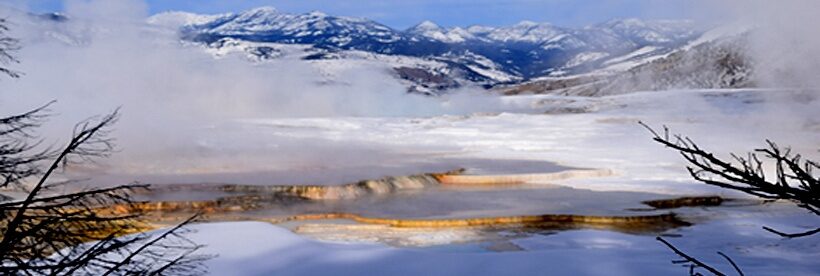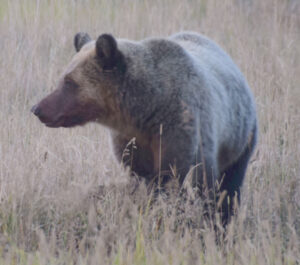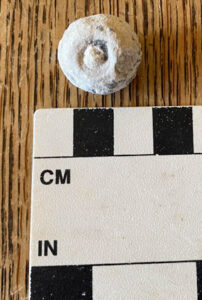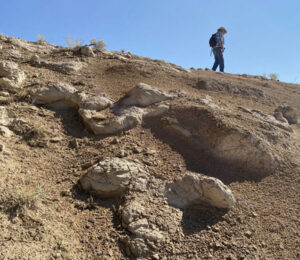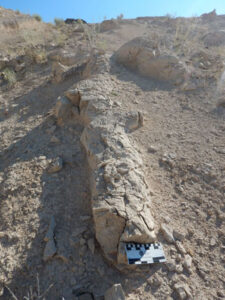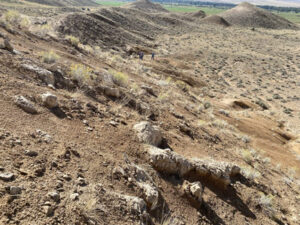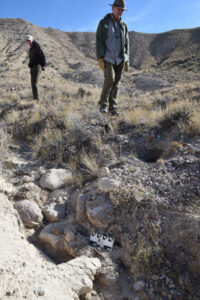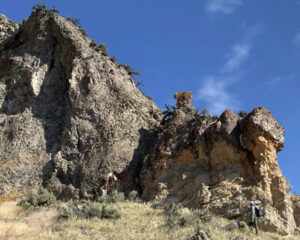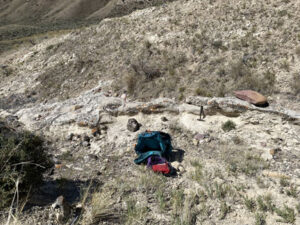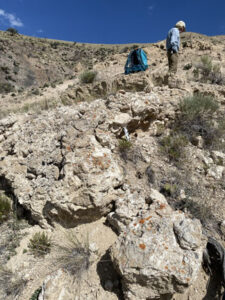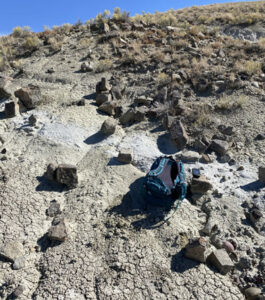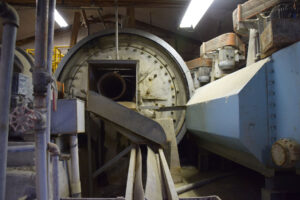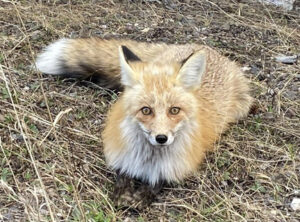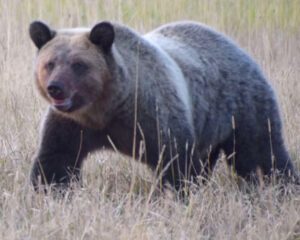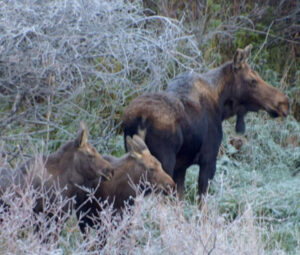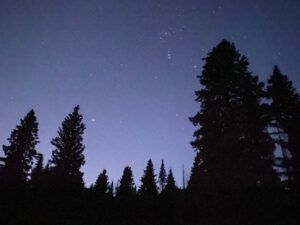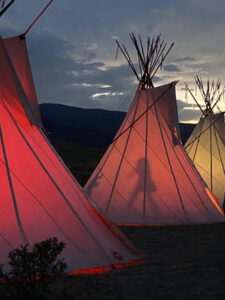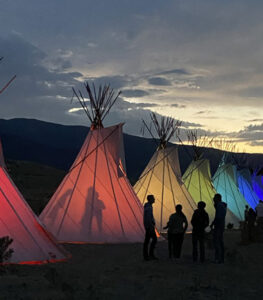The 2025 field season’s work is coming to a close. Most work during this season has been focused on Tertiary continental deposits in southwestern Montana, but some projects were directed at locatable and salable minerals – and even one dealing with “vintage” mining mill equipment. Wildlife encounters have always been a part of fieldwork in the Greater Yellowstone area, and they continued to occur throughout the 2025 work season. Coming face-to-face with a grizzly bear is always worrisome, but being bear-aware and carrying bear spray goes a long way to alleviate bear fears.
Geological fieldwork this season encompassed more work on Tertiary continental burrows (see photos below). Insect burrows found in the Sage Creek area near Lima, Montana are Eocene in age (circa 48-45 Ma) and included ones with architectural elements of Coprinisphaera, Eatonichnus, Feoichnus, and Rebuffoichnus. Probable mammal burrows of approximately 39-37 Ma near Dillon, Montana are still a study focus. Potential burrowers are Eocene-age canids such as Hesperocyons or Amphicyons for our larger burrows. Several types of fossil rodents are candidates for digging the smaller burrows that occur alongside the larger ones. A fossil mammal burrow of Uintan age (circa 45 Ma) was also found in extremely close proximity to a modern mammal (?badger) burrow in the Sage Creek area.
Tertiary volcanic units also were a focus of 2025 field work. Eocene volcanics of interest in the Sage Creek area near Lima, Montana included the Hall Spring basalt channel flow which may be either circa 51 Ma (Amoco legacy data) or 46.2 + 0.2 Ma in age. A slightly younger tuff, at 45.54 + 0.11 Ma, also occurs near the Hall Spring basalt where it cuts through probable Bridgerian (circa 49-48 Ma) spring deposits. Fieldwork in the White Hills area near Lima resulted in the location of a tuff that is not currently undergoing age analysis, but its proximity to a late Orellan (approximately 33-32 Ma) vertebrate locality indicates that its age will probably be correlative to the age of the vertebrate assemblage.
Note: Several colleagues and I also published a paper this past summer onBridgerian and Uintan (Eocene) Mammals from Sage Creek Area of Southwest Montana in the June 2025 issue of Paludicola.
And of course, in the travels associated with geological fieldwork, there are the frequent and always amazing wildlife encounters. Some of these animals are shown in the photos below!
